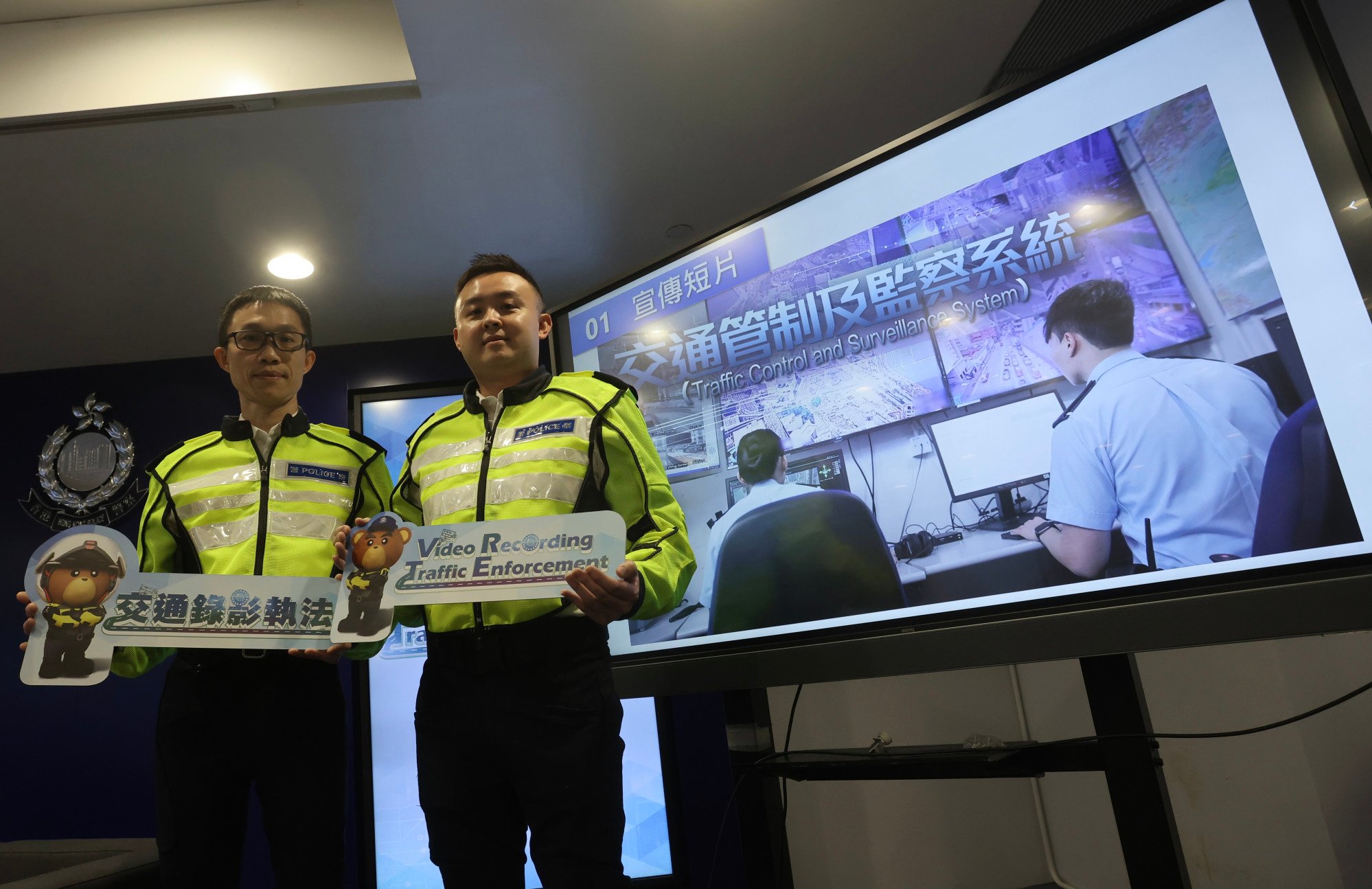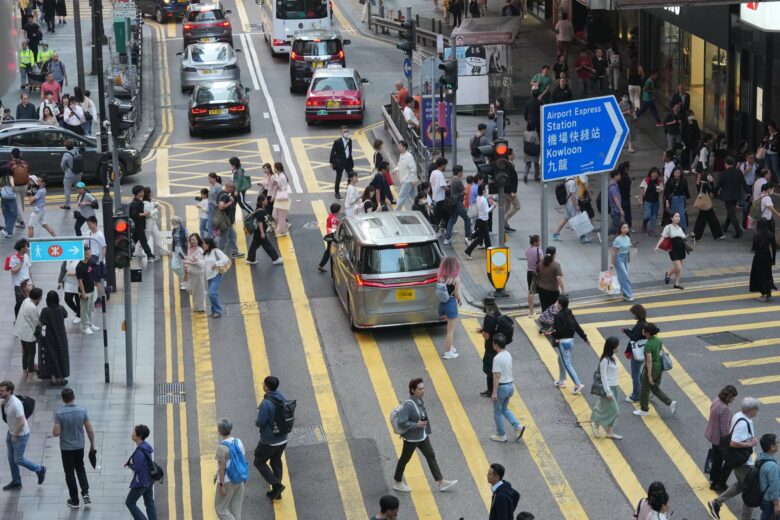Black spots on Hong Kong Island to be monitored from April 22 using footage from Transport Department to tackle congestion and traffic offences
Traffic police will start fining motorists at four black spots on Hong Kong Island using recorded surveillance footage from the Transport Department as part of a trial project to tackle congestion and strengthen enforcement against errant drivers.
The force said that the trial would allow traffic police officers to record and monitor footage at four intersections in Central and Causeway Bay starting on April 22.
Officers would be able to access and store footage from surveillance cameras installed by the Transport Department around the city to monitor traffic.
Do you have questions about the biggest topics and trends from around the world? Get the answers with
SCMP Knowledge
, our new platform of curated content with explainers, FAQs, analyses and infographics brought to you by our award-winning team.
“We want to make good use of existing resources by the Transport Department to give our frontline officers another option to enforce laws,” said Nip Hoi-kwan, superintendent of traffic management.
The four spots are the intersections of Ice House Street, Pedder Street and Bonham East Road with Queen’s Road Central and the junction of Queen’s Road East and Wong Nai Chung Road.
Nip said on Monday that the surveillance aimed to deter motorists from traffic offences, such as unauthorised stopping by the roadside or in the yellow boxed junction, which would cause obstruction or risks to public safety.
“We will carry out the pilot project for three months before reviewing its effectiveness and whether to expand into other traffic junctions,” he said.
Mak Chung-kit, superintendent of enforcement and control on Hong Kong Island, said the four trial spots were chosen because congestion at these junctions could result in spillover jams on nearby major arterial roads such as Connaught Road, Gloucester Road and Canal Road.
The new approach would improve enforcement, which currently had limited effectiveness against traffic offences such as vehicles stopping to load and unload goods or passengers, he explained.
“We regularly deploy officers to patrol the area and regulate traffic, which improves the situation temporarily,” he said.
“But once the officers leave the area, motorists repeat the same offences. Even illegally stopping for a short period of time could result in congestion during peak hours.”
The Post observed traffic for 10 minutes near the intersection of Pedder Street and Queen’s Road Central at around 5pm on Tuesday, with at least 30 vehicles either stopping to pick up passengers within the double yellow line area or being forced to remain stationary in the middle of the junction due to congestion.
A few taxis were also seen dropping off passengers in the middle of the street because the roadside was blocked by some trucks loading goods.
Many cars remained stuck in the intersection when the traffic lights turned red, forcing pedestrians to weave between the vehicles to cross the road.
In front of Manning House on Queen’s Road Central, at least eight vehicles were seen waiting at around 6pm, forcing a private minibus to stop in the middle of the road to pick up passengers while the cars behind merged into one lane, slowing down traffic.
The force will start hanging up banners near the four junctions from April 16, reminding motorists that they will be recorded, with officers to start recording traffic footage from April 22.
Nip said the force would record during periods of high congestion, such as morning and evening peak hours, and take enforcement action against motorists who breached traffic laws.

Using the recorded footage, officers will be able to identify number plates, look up the identity of drivers and issue fixed penalty notices. As with other traffic offences, motorists have the right to dispute the charge.
Nip said artificial intelligence (AI) functions would not be put into action yet, but footage could be used to alert patrolling officers to criminal activity.
“We will be using existing surveillance systems installed by the Transport Department, which does not have AI functions for now,” Nip said.
“Ultimately, our goal is [to improve] traffic law enforcement, but if our officers notice other incidents such as criminal activity, as members of the police force, I am sure our residents also wish for them to investigate.”
He said that while officers could identify vehicle number plates from the footage, facial recognition would not be deployed, for example, to prosecute pedestrians for jaywalking.
Nip added that the footage would be stored in the same way as evidence for other traffic offences.
Newly appointed Commissioner of Police Joe Chow Yat-ming on Saturday said the force was studying the suitability of connecting surveillance systems with those under the Transport Department and the Leisure and Cultural Services Department to “avoid repetitive installation”.
More Articles from SCMP
For US ports and jobs tied to them, Trump’s tariffs offer front-row seat on ‘bumpy’ ride
Hong Kong’s Sunbeam Theatre finds new home, set to reopen as soon as mid-June
ITTF Men’s and Women’s World Cup Macau: Wang Manyu fights back, Wang Chuqin is ‘lucky’
Inside A$AP Rocky’s luxury watch collection, from Rolex and Piaget to Jacob & Co.: he wore a Patek Philippe worth US$80,000 to court, and loves fun and affordable Japanese brand Kapital too
This article originally appeared on the South China Morning Post (www.scmp.com), the leading news media reporting on China and Asia.
Copyright (c) 2025. South China Morning Post Publishers Ltd. All rights reserved.
